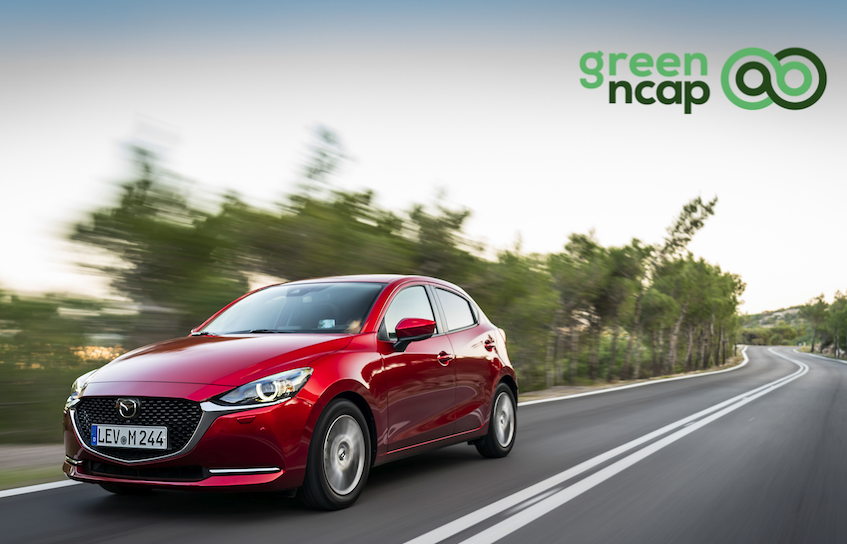 Green NCAP has rated the Skyactiv-G 1.5 powered Mazda2 with 3.5 stars for fuel efficiency and emissions. The outcome places the tested 55kW/75PS version of Mazda’s award-winning B-segment model in a very exclusive club of internal combustion-powered vehicles.
Green NCAP has rated the Skyactiv-G 1.5 powered Mazda2 with 3.5 stars for fuel efficiency and emissions. The outcome places the tested 55kW/75PS version of Mazda’s award-winning B-segment model in a very exclusive club of internal combustion-powered vehicles.
“Results like these validate our strategy at Mazda to continue improving internal combustion and in doing so mitigate today the real-world environmental impact of our cars,” says Heiko Strietzel, Powertrain Manager at Mazda Motor Europe. “It’s part of our multi-solution approach that includes different forms of power and, as always, painstaking efforts to reduce every possible gram of weight.”
Lightweight and responsive as well as efficient, Mazda’s attractive subcompact is one of only three internal combustion vehicles without a full hybrid system to be awarded 3.5 stars. Only full battery-electric (BEV) and plug-in electric (PHEV) models have achieved higher Green NCAP ratings.
The latest 55kW/75PS version of the 2022 Mazda2 currently being rolled out in Europe features a higher compression (15:1 vs. 13:1) Skyactiv-G petrol engine with new technology. As a result, Mazda has reduced fuel consumption and CO2 emissions by around 10% compared to the model tested, despite going without the Mazda M Hybrid system, while also adding 6% more torque. And Mazda’s official figures are remarkably accurate in the real world too: The Mazda2’s average consumption during the Green NCAP tests was only marginally higher than the official WLTP combined-cycle figure.
An initiative from safety assessment organisation Euro NCAP, Green NCAP recognises carmakers whose models go beyond the minimum requirements in terms of efficiency and tailpipe emissions. It does so using a range of road and lab tests reflecting a variety of realistic driving situations including extreme temperatures (from -7°C to +35°C), altitudes up to 1,200m, short trips, heavy loads and motorway speeds. The star rating indicates the average results across three areas covering energy efficiency, pollution levels and greenhouse gas emissions.

































